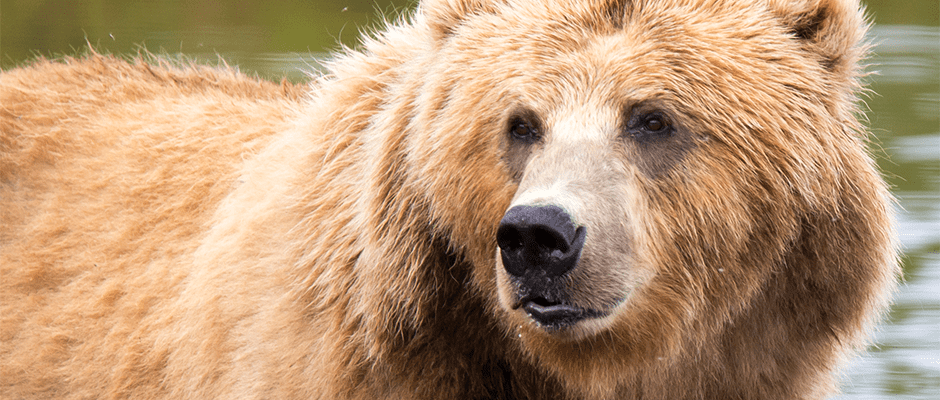Share this article
Kodiak bears benefit from following salmon
Kodiak brown bears (Ursus arctos middendorffi) that follow the “resource wave” of sockeye salmon (Oncorhynchus nerka) benefit by eating longer and consuming more than bears that stay put, according to new research.
“We know that bears in these coastal areas do a lot better when they eat a lot of salmon,” said William Deacy, a postdoctoral research at Oregon State University and lead author of the study published in Scientific Reports. “We never knew how much salmon they were eating when they were following the resource wave.”
Bears face a fundamental challenge at salmon spawning sites where they might only have salmon for 30 days — not enough time to consume as much as they need, Deacy said. He and his colleagues knew some bears were able to travel and follow salmon, but they didn’t know the benefits of doing so.
In their study, Deacy and his team collected hair from 18 bears after tracking them for a year with GPS collars. Studying the chemicals in their hair, they were able to determine the bears’ diet. Mercury showed the quantity of salmon the bears had eaten. Stable isotopes showed what percentage of their diet the salmon contributed.
The team found bears that tracked the salmon resource wave the best ate the most salmon for the longest period of time. One bear in the resource wave study ate 2 tons of salmon in a single year, Deacy said.
Past studies showed that variation in individuals’ foraging ability, traits such as dominance and the landscape they occupied could influence how successful bears were while fishing, Deacy said, but this study showed that the time they spent with salmon was a particularly strong predictor of how much they ate.
The research also demonstrated the importance of genetic diversity in salmon populations, he said, because it is an important factor in determining when salmon spawn. This diversity is at risk from threats like hatchery salmon supplementation and poor fisheries management. Bears would be harmed if salmon lose genetic diversity and spawn all together, Deacy said, rather than across the summer and fall.
Management should not just focus on having lots of salmon, he said. “It has to be a genetically diverse population spread over time.”
Deacy hopes the overarching pattern that appears in the study can inform future research.
“It’s always a big win any time we can find a behavior that’s documented at a larger scale,” he said. “It has to be a strong pattern to come out in front of all of that individual variation.”
Header Image: A Kodiak brown bear stands in Kodiak National Wildlife Refuge. When the bears “follow the resource wave,” they can eat more salmon for longer periods of time. ©Lisa Hupp/USFWS








